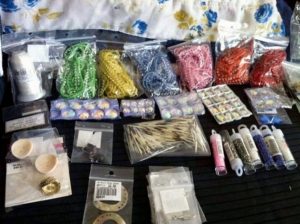Opinion: Negatives and positives
 By Keith Corbiere
By Keith Corbiere
In a study conducted by the Environics Institute for Survey Research in 2016, Canadian people were surveyed on their general impressions of Indigenous people. The largest percentage of surveyees (33%) said that they associate First Nations people with “negative experiences in Canada”, including “a negative legacy of [Indigenous] experiences in Canada”, “the loss of culture and assimilation associated with institutionalized oppression”, and “isolation and separation from Canada”.
While this acknowledgement of the historic mistreatment of Indigenous populations is not negative in and of itself, it goes to show the leading perception held by the majority of those around us. These negative connotations can become a deterrent for young Indigenous people finding themselves detached from their heritage, hesitant or unwilling to embrace their cultural identity.
The World Population Review states that, “[According to] the 2011 census, the racial and ethnic composition of Ontario was 71.7% white, 25.9% visible minority groups and 2.4% Aboriginal groups (1.6% First Nations, 0.7% Metis, 0.1% other Aboriginal).” It goes without saying that if you grew up in a small, quiet town in southern Ontario, spotting another Indigenous person would be a rare occurrence. The only representation likely to be seen was that of the Indian in movies or on TV, maybe the single-tear Aborigine played by Italian actor Iron Eyes Cody in the PSA “Keep America Beautiful”, or one of the many lampoons produced by shows such as The Simpsons. Indigenous figures only appeared in history books as hard-eyed primitives crouched next to tipis, or leveling bows from horseback. As a young Indigenous man, I knew little of my heritage apart from the general knowledge possessed by all the kids in my class.
In retrospect, this may have been the period when I was most grateful for my mother. My mother is a crafter, a dancer, and a vendor, who took me along with her to hundreds of stops along the Ontario pow-wow trail. She makes fry bread at home, threads and beads her own dreamcatchers, and dances in Jingle Dress in the dance arena. When I was a kid, she came to my school to give a presentation on Indigenous culture to the entire student body, drum in hand. We did not have long, black hair, or russet complexions, but I knew to which culture I belonged, and I felt at home. To me, the culture of Indigenous people had always been one of inclusion and hope, and I was surprised by the findings of Indigenous being perceived with such negative associations by such a large swath of Canadians.
I am grateful to my mother for what she taught me. But for every Indigenous child sufficiently educated about their ancestry, there are doubtless hundreds of others that know nothing but the crying Indian, the one-dimensional parody, or the Redskins logo. These kids deserve to know who they are. They deserve to taste corn soup, try on moccasins, and hear the legends of their forebears. If they are not as lucky as I was, we can only hope to educate them through supporting Indigenous art, attending pow-wows, and spreading awareness of Indigenous artists. If you are an Indigenous parent, you can show your kids some of the children’s programming on APTN. If you are a young adult, you can follow countless Indigenous activists on social media who continue to campaign for Indigenous rights and visibility to this day. With enough education and awareness, we can change the consensus, and turn how people perceive us from a negative into a positive.
References:
Canadian Public Opinion on Aboriginal Peoples
The Environics Institute for Survey Research: https://tidescanada.org/wp-content/uploads/2016/06/Canadian-Public-Opinion-on-Aboriginal-Peoples-2016-FINAL-REPORT.pdf
Ontario Population 2019
World Population Review: http://worldpopulationreview.com/canadian-provinces/ontario-population/


